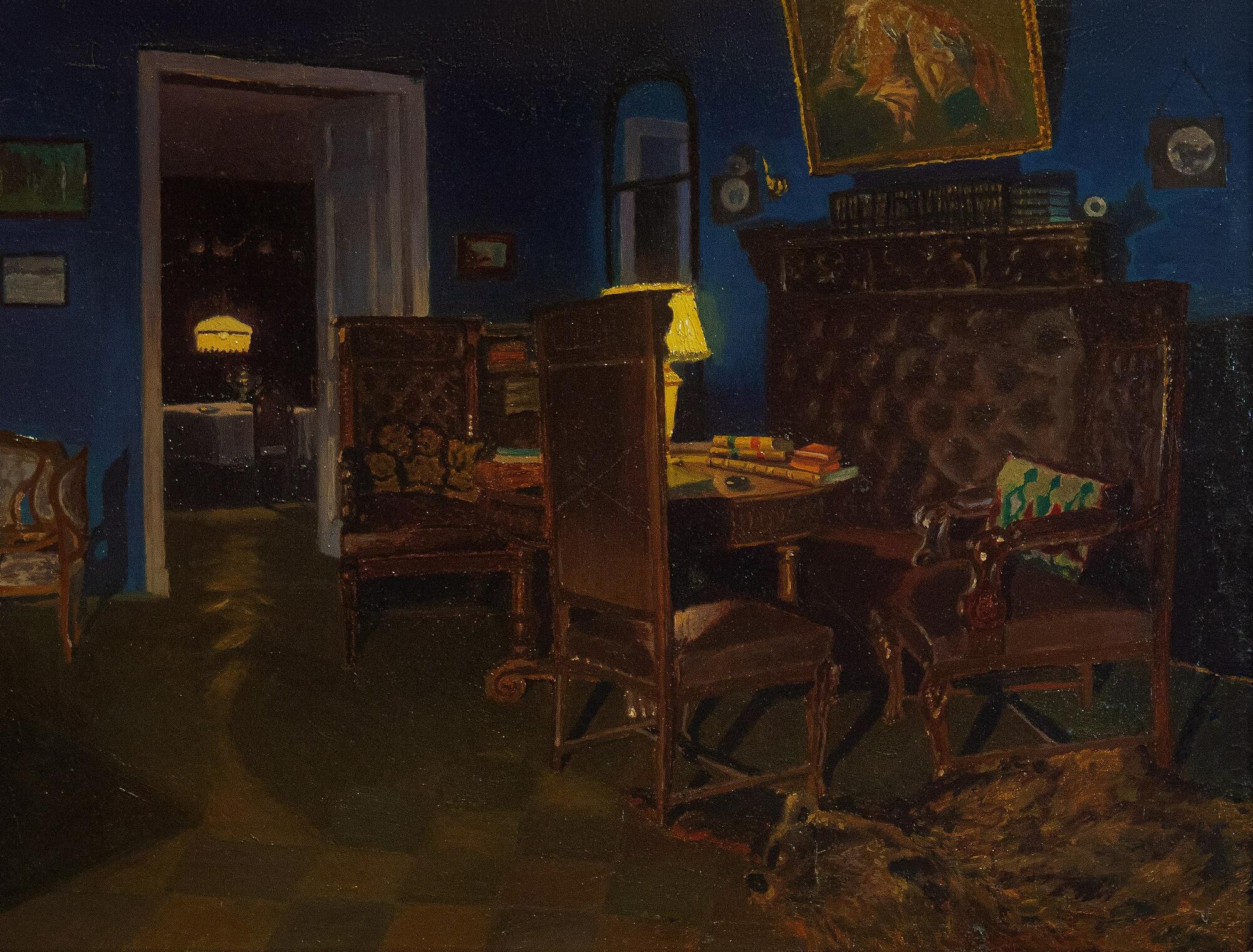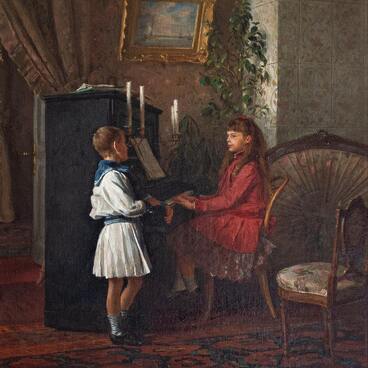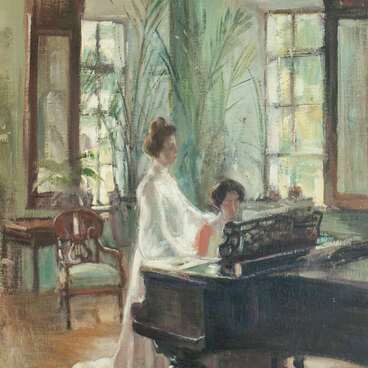Elements of the interior genre appeared on the canvases of Renaissance artists. As an independent genre, the interior portrait was first encountered in the works of Dutch painters of the 17th century: Emanuel de Witte, Pieter de Hooch. Techniques and styles of artists changed over time, influenced by the requirements of the mainstream in painting. For example, in the 17th century, Western European artists emphasized the poetry of everyday human life by depicting their characters surrounded by furniture. The light from a window or a kitchen hearth, along with cooks or artisans, became part of the paintings.
The theme of the interior appeared in Russian art at the turn of the 19th century but became more widespread in the second quarter of the 19th century. The artists captured the views of living rooms, offices, artists’ workshops, classrooms, and children’s rooms. Among the most famous works were “The room of the artist P.F. Sokolov in the house of P.V. Nashchokin in Vorotnikovsky lane in Moscow” by Pyotr Sokolov, “The Volkonskys’ cell in the prison of the Petrovsky plant” by Nikolay Bestuzhev, and “Forge and carriage shed in the Post carriages and britzkas department on Bolshaya Morskaya Street in St. Petersburg” by Luindzhi Premazzi. In the 20th century, the paintings began to feature the achievements of science and technology of that time. The interior has become not only a portrait of the room but also an allegorical description of the time.
In portrait and genre painting, the interior served as a background for the main plot. In historical scenes, it helped to convey the realism of the event, and in chamber scenes — the emotional mood of the picture and the character’s personality.
The genre of interior portrait encourages the realistic portrayal of the outlines of objects, chiaroscuro, volume, surface texture, and perspective. The selection of colors and shades makes the interior “alive”, even without living characters.
The museum’s collection “The Old Mansion” contains a painting “Evening Interior” by an unknown artist. The painter depicted a spacious room with massive furniture. The high-backed sofa and chairs are upholstered in leather, and the dark wood tops are decorated with carvings. Bulky furniture is typical of the Soviet period of the 1930s — 1950s and was known as the “Stalinist Empire”. This fact allowed art critics to assume that the painting could not have been painted earlier than in the 1930s.
The interior is performed in dark colors. The cool palette of the walls is combined with the warm colors of the furniture. The lighting is complemented by a table lamp and a lampshade in the back room, which probably served as a dining room.
The theme of the interior appeared in Russian art at the turn of the 19th century but became more widespread in the second quarter of the 19th century. The artists captured the views of living rooms, offices, artists’ workshops, classrooms, and children’s rooms. Among the most famous works were “The room of the artist P.F. Sokolov in the house of P.V. Nashchokin in Vorotnikovsky lane in Moscow” by Pyotr Sokolov, “The Volkonskys’ cell in the prison of the Petrovsky plant” by Nikolay Bestuzhev, and “Forge and carriage shed in the Post carriages and britzkas department on Bolshaya Morskaya Street in St. Petersburg” by Luindzhi Premazzi. In the 20th century, the paintings began to feature the achievements of science and technology of that time. The interior has become not only a portrait of the room but also an allegorical description of the time.
In portrait and genre painting, the interior served as a background for the main plot. In historical scenes, it helped to convey the realism of the event, and in chamber scenes — the emotional mood of the picture and the character’s personality.
The genre of interior portrait encourages the realistic portrayal of the outlines of objects, chiaroscuro, volume, surface texture, and perspective. The selection of colors and shades makes the interior “alive”, even without living characters.
The museum’s collection “The Old Mansion” contains a painting “Evening Interior” by an unknown artist. The painter depicted a spacious room with massive furniture. The high-backed sofa and chairs are upholstered in leather, and the dark wood tops are decorated with carvings. Bulky furniture is typical of the Soviet period of the 1930s — 1950s and was known as the “Stalinist Empire”. This fact allowed art critics to assume that the painting could not have been painted earlier than in the 1930s.
The interior is performed in dark colors. The cool palette of the walls is combined with the warm colors of the furniture. The lighting is complemented by a table lamp and a lampshade in the back room, which probably served as a dining room.



